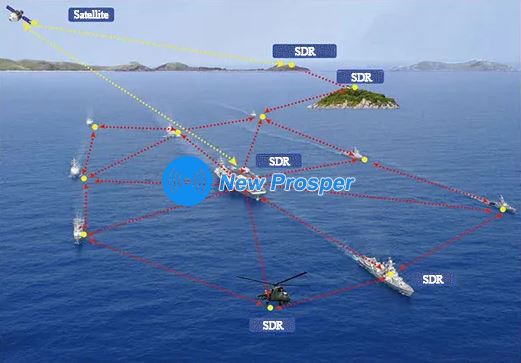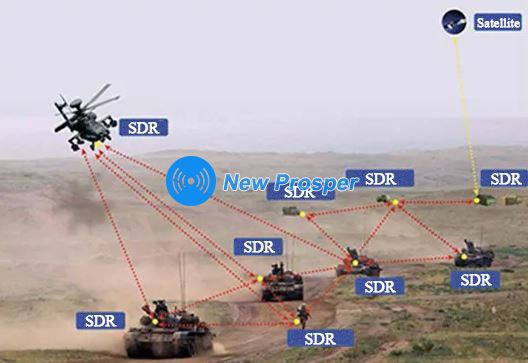In response to the maritime wireless communication environment, vessels equipped with SDRs can rapidly establish a broadband wireless network characterized by high reliability, high mobility, strong survivability, anti-jamming capability, and over-the-horizon transmission. This ensures flexible networking and multi-hop transmission among ships and between aircraft and ships within the fleet, providing users with secure, reliable, stable, and timely comprehensive multimedia transmission services including voice, data, and video.
The system supports dynamic networking during naval fleet operations at sea. The network topology rapidly reconverges as the fleet formation changes, without affecting the overall fleet's wireless communication. Through the wireless multi-hop ad-hoc network, the flagship SDR commands and coordinates the operation and activities of the entire fleet, while other fleet SDRs promptly report and transmit various information to the flagship and can also exchange information with each other. Simultaneously, airborne SDRs act as mobile elevated coverage enhancement nodes for the entire network, further expanding the network's coverage range while effectively extending the operational radius and field of view, providing the flagship SDR with more comprehensive information. Additionally, the flagship SDR achieves interoperability with remote command centers via satellite-on-the-move systems.
Link transmission self-awareness fully ensures service continuity and smoothness, while load balancing effectively improves the communication efficiency of the fleet's wireless network. Its anti-jamming capability significantly enhances the fleet's electromagnetic countermeasure capacity in maritime operations, and its survivability ensures the wireless network maintains robust viability. The failure of any single SDR within the network does not affect the operation of the entire fleet network, making it truly an"unbreakable maritime mobile network".





